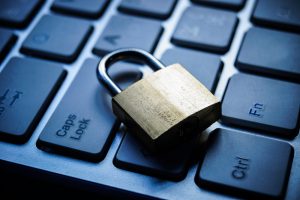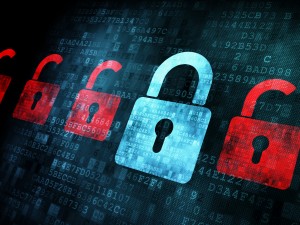
A new federal mandate requires most commercial truck drivers to “go green” by trading in their old paper logs for electronic logging devices (ELDs) by December 18, 2017. Thought to affect roughly 3.5 million truck drivers, the new mandate is intended to increase driver compliance with federal drive-time regulations and decrease burdensome paperwork.
Commercial truck drivers are legally required to take a lengthy break after 11 hours of consecutive driving, but drivers have admitted to driving longer hours and falsifying their logs. The ELD mandate is expected to improve compliance with the federally required hours of service because the logs will be electronically linked to vehicle engines. Reports have shown that on average each year, there are 1,800 crashes (resulting in 60 injuries and 25 deaths) from driving while tired, and the hope is that new ELD requirements will decrease the number of fatigue-related accidents.
When the engine is on, the ELD records the date, time and location of the truck within a one-mile radius. It also records the drivers’ identification and motor carrier information. It does not record continuously, but automatically logs this information once per hour. The ELD is also intended to document when a driver changes status from “driving,” “on duty but not driving,” “moving to the sleeper berth,” and “off duty.” The driver is responsible for inputting the status information, since an entirely automatic option was considered too invasive. Recorded ELD data is stored and subject to access by authorized safety vehicles during inspections or audits.
Driver monitoring, of course, is nothing new. Truckers are already required to manually log most of this information and make it available upon request. Nonetheless, the ELD mandate was not warmly received by many in the commercial trucking community. A contentious relationship has existed between the commercial trucking industry and the Department of Transportation (DOT) since 1995, when Congress directed the DOT to revise the hours of service requirements. From 1995 to 2012, the DOT proposed many rules changes, all of which were challenged and struck down—three times in federal court, once in the Seventh Circuit.
In 2012, Congress stepped in again and passed the Motor Vehicle Enhancement Act, explicitly directing the DOT to come up with an ELD rule. In December 2015, when the new ELD rule was first released, it was promptly challenged by two professional truck drivers and the Owner-Operator Independent Drivers Association (OOIDA). This time, however, on October 31, 2016, the Seventh Circuit upheld the ELD mandate.
Petitioners argued the ELD mandate should be struck down for numerous reasons, including their contention that it constitutes an unreasonable search and/or seizure and thereby violates the Fourth Amendment. The Seventh Circuit responded to the Fourth Amendment challenge by noting that it “need not resolve whether the ELD mandate constitutes a search or seizure. Even if it did, it would be reasonable under the Fourth Amendment exception for pervasively regulated industries.”
The Court used a three-part analysis to conclude that the commercial trucking industry is pervasively regulated: (1) the history of the regulation in commercial trucking; (2) the comprehensiveness of commercial trucking regulations; and (3) the inherent dangers in the commercial trucking industry.
To each of these points, respectively, the Court noted that the industry has been government regulated since 1935. It said that commercial trucking regulations are comprehensive and extensive, governing everything from driver qualifications to vehicle inspections. And, lastly, the Court cited its own opinion from 2007 upholding random drug testing for truck drivers to show that commercial trucking is inherently dangerous activity. In 2007, it stated that trucking is “fraught with such risks of injury to others that even a momentary lapse of attention could have disastrous consequences.”
The Seventh Circuit also established that the ELD mandate is a reasonable way to regulate the commercial trucking industry. It found that the government has a substantial interest in the commercial trucking industry and that ELDs are a necessary advance because paper logs are subject to falsification, forgery, and human error—not to mention motor carrier pressure on drivers to drive for longer hours than legally allowed. It also considered the ELD mandate a constitutionally adequate substitute for a warrant largely because it is not any different than the current search of paper logs.
In response to the petitioner’s other arguments, the Seventh Circuit ruled that (1) ELDs do not need to be entirely automatic because, if they were, they would be “breathtakingly invasive;” (2) the ELD mandate sufficiently protects drivers from ELD-related harassment by motor carriers; (3) no cost-benefit analysis was necessary for implementing the ELD mandate because it was done at Congress’s direction; and (4) ELD information will be kept sufficiently confidential as per the statutory requirement.
The OOIDA has not said whether it will appeal the Seventh Circuit’s decision, but the organization has made clear its disappointment with the ruling. Its displeasure notwithstanding, it appears that the commercial trucking industry will be going green. The hope is that ELDs will collect information more efficiently and accurately, while creating safer roads, but without introducing new or unforeseen privacy concerns for drivers.



 Recently, the Third Circuit Court of Appeals overturned a United States District Court for the District of New Jersey dismissal of a class action filed in the aftermath of a data breach at Horizon Healthcare Services Inc., (“Horizon”). The appellate decision in In Re: Horizon Healthcare Services Inc. Data Breach Litigation may expand the conditions under which a plaintiff can file suit against a company for loss of digitalized personal information. According to the Third Circuit, it appears that violations of federal privacy law are considered de facto injuries, providing plaintiffs with standing regardless of whether they suffer an economic loss.
Recently, the Third Circuit Court of Appeals overturned a United States District Court for the District of New Jersey dismissal of a class action filed in the aftermath of a data breach at Horizon Healthcare Services Inc., (“Horizon”). The appellate decision in In Re: Horizon Healthcare Services Inc. Data Breach Litigation may expand the conditions under which a plaintiff can file suit against a company for loss of digitalized personal information. According to the Third Circuit, it appears that violations of federal privacy law are considered de facto injuries, providing plaintiffs with standing regardless of whether they suffer an economic loss.
 As the Internet of Things continues to grow and expand, the fact that guidance on security measures and protections is a necessity has become increasingly evident. Recently, the National Institute of Standards and Technology (NIST) released a lengthy set of IoT guidelines, known as NIST Special Publication 800-160. NIST unveiled the nearly 260-page publication at the Splunk GovSummit 2016 conference. The announcement came on the heels of the Dyn attack in late October, which further highlighted the immediate need for standards and guidance.
As the Internet of Things continues to grow and expand, the fact that guidance on security measures and protections is a necessity has become increasingly evident. Recently, the National Institute of Standards and Technology (NIST) released a lengthy set of IoT guidelines, known as NIST Special Publication 800-160. NIST unveiled the nearly 260-page publication at the Splunk GovSummit 2016 conference. The announcement came on the heels of the Dyn attack in late October, which further highlighted the immediate need for standards and guidance.
 On November 16, 2016 the House Committee on Energy and Commerce’s Subcommittee on Commerce, Manufacturing, and Trade and the Subcommittee on Communications and Technology held a hearing on “Understanding the Role of Connected Devices in Recent Cyber Attacks.” The hearing was in response to the unprecedented distribution denial of service (DDos) on October 21, 2016 which saw consumer websites such as Netflix, Twitter and CNN as well as others go down following a botnet attack directed from malware in millions of American devices. The hacked devices used maliciously, (known as bots or collectively as botnets) flooded these websites with junk traffic, overwhelming the sites and preventing them from being able to distinguish from legitimate traffic. The hearing focused on what vulnerabilities are present, possible solutions, possible ramifications of attacks on consumer devices, critical infrastructure and public safety mechanisms from a wide array of malicious actors.
On November 16, 2016 the House Committee on Energy and Commerce’s Subcommittee on Commerce, Manufacturing, and Trade and the Subcommittee on Communications and Technology held a hearing on “Understanding the Role of Connected Devices in Recent Cyber Attacks.” The hearing was in response to the unprecedented distribution denial of service (DDos) on October 21, 2016 which saw consumer websites such as Netflix, Twitter and CNN as well as others go down following a botnet attack directed from malware in millions of American devices. The hacked devices used maliciously, (known as bots or collectively as botnets) flooded these websites with junk traffic, overwhelming the sites and preventing them from being able to distinguish from legitimate traffic. The hearing focused on what vulnerabilities are present, possible solutions, possible ramifications of attacks on consumer devices, critical infrastructure and public safety mechanisms from a wide array of malicious actors. With the recent news regarding Yahoo’s massive data breach and the continuing posting of Clinton Foundation emails by Wikileaks, cybersecurity policy is beginning to get the discourse it is due. Secretary Clinton’s campaign was swift to publish a lengthy briefing on her cybersecurity policy agenda when she declared her candidacy. Much of it focuses on investment and development in science and technology. In a speech in August Clinton called for cyber-attacks to be treated as an assault on the country and should require “a serious political, economic and military response.” However, the plurality of Secretary Clinton cyber proposals would likely continue much of the Obama Administration’s own cybersecurity policy.
With the recent news regarding Yahoo’s massive data breach and the continuing posting of Clinton Foundation emails by Wikileaks, cybersecurity policy is beginning to get the discourse it is due. Secretary Clinton’s campaign was swift to publish a lengthy briefing on her cybersecurity policy agenda when she declared her candidacy. Much of it focuses on investment and development in science and technology. In a speech in August Clinton called for cyber-attacks to be treated as an assault on the country and should require “a serious political, economic and military response.” However, the plurality of Secretary Clinton cyber proposals would likely continue much of the Obama Administration’s own cybersecurity policy.
